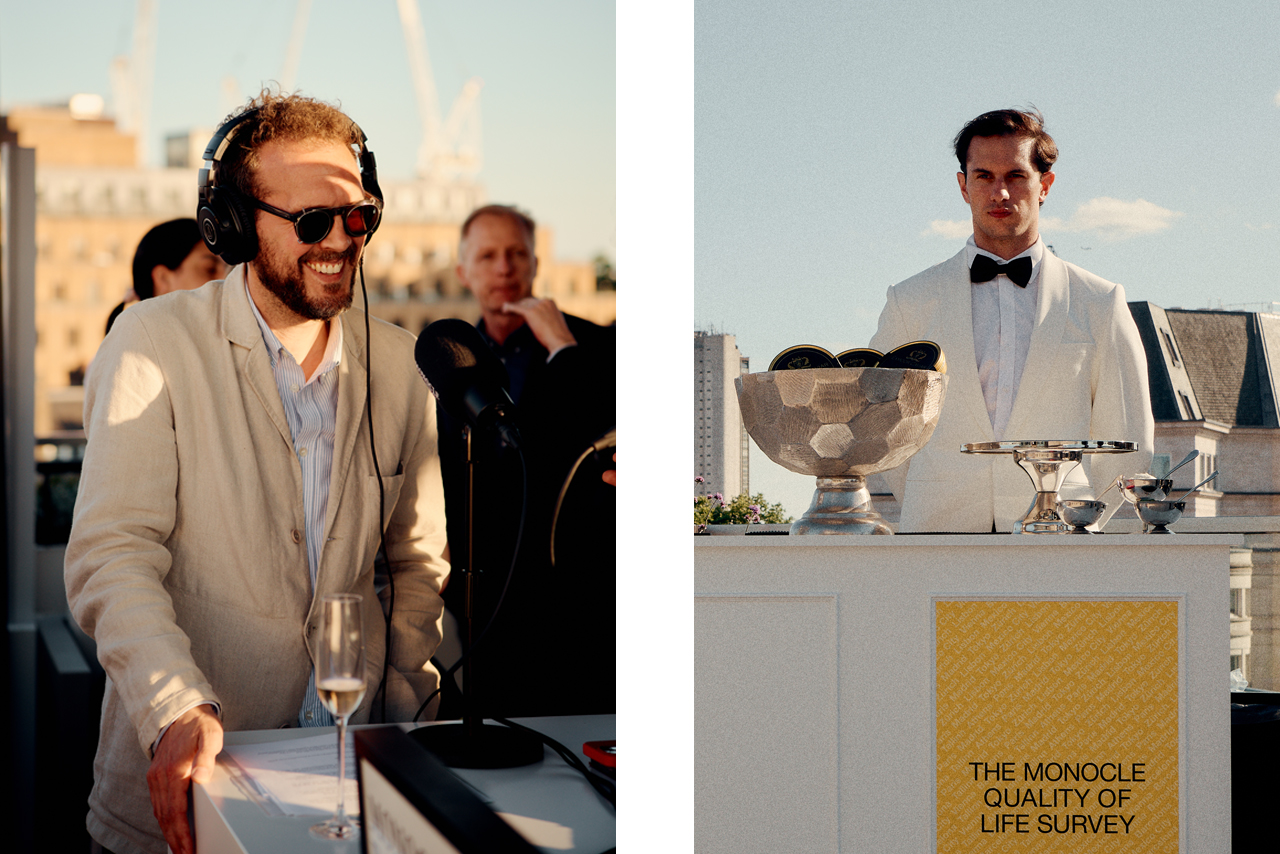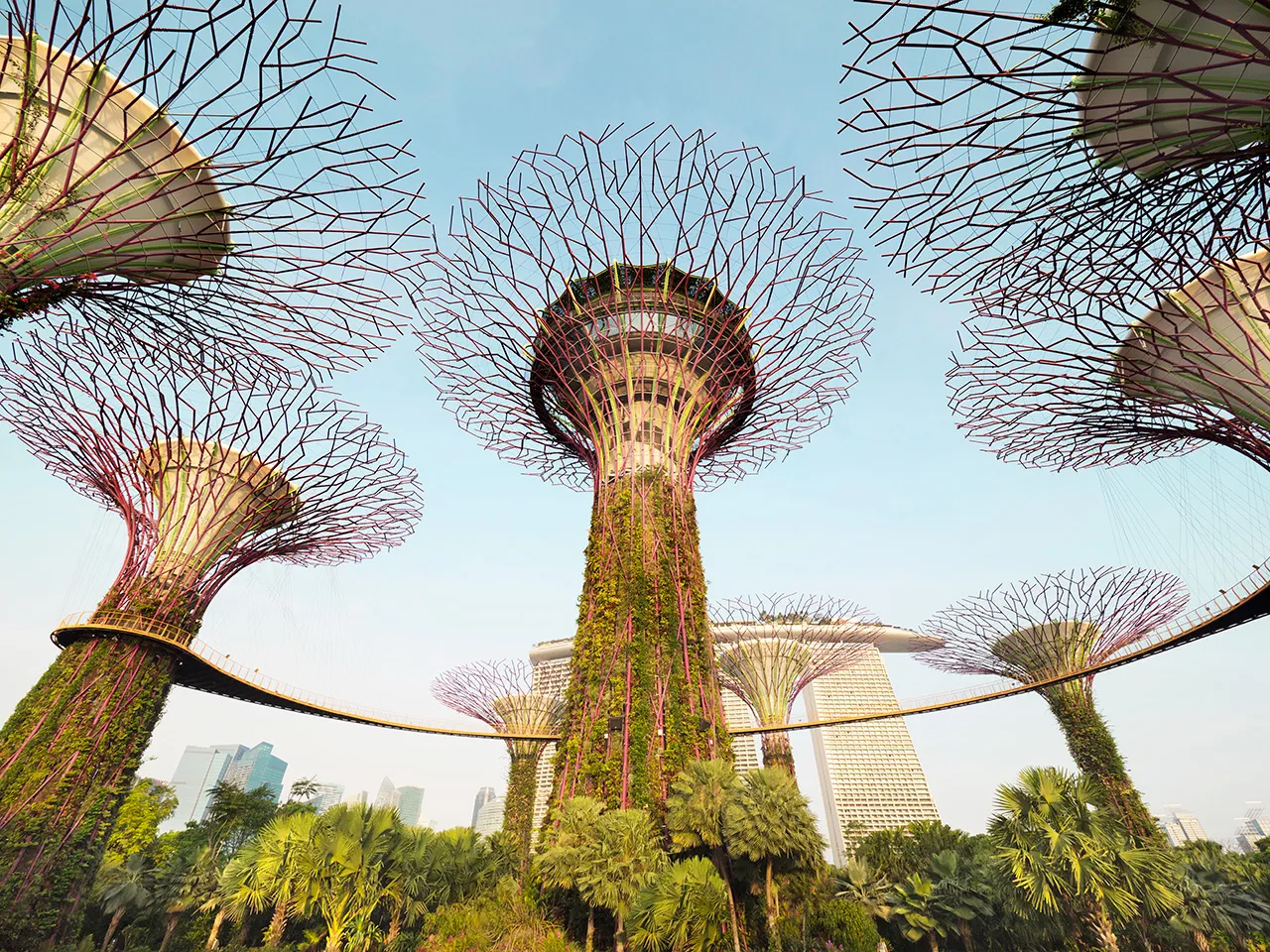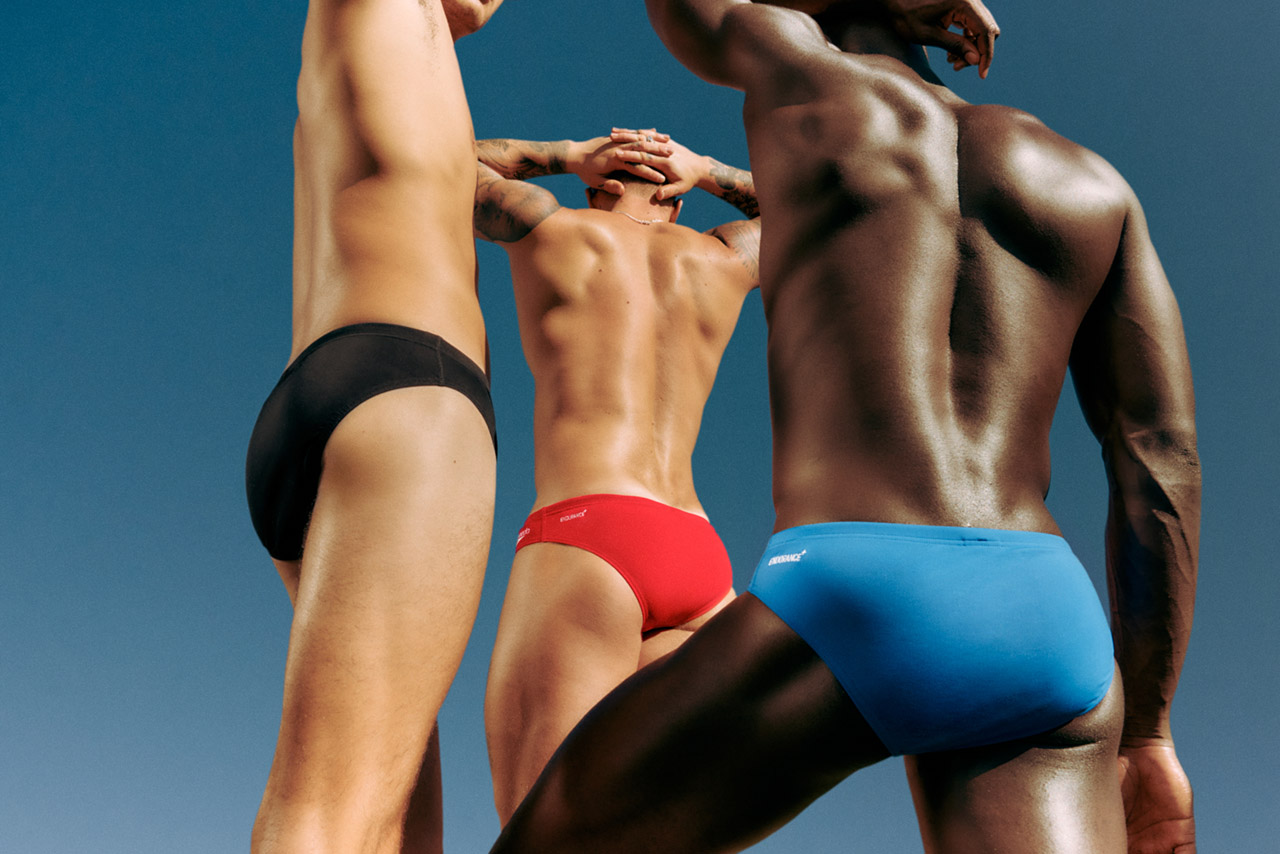The rise of sky gardens, getting into the summer syrup, the rooftop launch of our Quality of Life Survey 2025 and Douglas Conklyn, senior vice president of design at Speedo.
|
Wednesday 9/7/25
|

|
|
London
Paris
Zürich
Milan
Bangkok
Tokyo
Toronto
|
|
|
|

Good morning from Midori House. For more news and views, tune in to Monocle Radio or visit monocle.com. Here’s what’s coming up in today’s Monocle Minute:
THE OPINION: Getting the great American road trip back on track
HOUSE NEWS: Rooftop launch of our Quality of Life Survey 2025
FROM MONOCLE.COM: The rise of sky gardens
THE DAILY TREAT: Getting into the summer syrup
Q&A: Douglas Conklyn, senior vice president of design at Speedo
|
|
The great American road trip is back – but this time it’s on rails
By Gregory Scruggs
|

|
The US secretary of transportation, Sean Duffy, is hitting the road – and he wants you to ride shotgun. The cabinet official recently struck out from the capital in the direction of his native Wisconsin to promote the Great American Road Trip. It’s an initiative that seeks to honour the country’s 250th birthday, which takes place next year, and helpfully coincides with falling petrol prices that the administration credits to president Donald Trump’s “drill baby, drill” fossil-fuel agenda. Duffy wants more US residents to hit the road. But is the nation’s mobility mogul on the right track?
The roadtrip is a time-honoured summer tradition in the US and the catalyst of many great literary works, including Jack Kerouac’s On the Road and Jonathan Raban’s Driving Home (my current nightstand reading). Duffy, a former reality-TV star, is perhaps more starry-eyed than most about windshield time. He met his wife while trapped in a motorhome on MTV’s Road Rules in 1998. With nine children, the family is naturally more inclined to opt for road trips due to the sheer economy of scale.

All aboard: Amtrak is enjoying record passenger numbers
Yet the travel plans of the American public are changing. The US’s national rail carrier, Amtrak, facilitated a record 32.8 million trips in 2024 and its long-distance routes saw an 8 per cent year-on-year increase. After decades in the doldrums, Amtrak is on the cusp of an impressive comeback. New routes, such as the Floridian(Chicago-Miami), recently debuted, while the Mardi Gras Service(New Orleans-Mobile) will begin in August. Its sleek Siemens-designed and made-in-California Airo train is also on track for launch next year.
While Amtrak’s rail network is a far cry from those found in Europe or Japan, its cross-country routes offer breathtaking scope and scenery, as well as a masterclass in clever branding. Traveling from Chicago to Los Angeles via the Texas Eagle and Sunset Limited is roughly three times the length of Europe’s longest train ride. While 65-hour rail journeys are not for everyone, they provide a far more relaxing and picturesque way to experience the US than the monotonous tarmac of the interstate highway system.
In a bid to rouse the road-trippers, Duffy highlighted upcoming events such as next year’s 2026 FIFA World Cup and the LA 2028 Summer Olympics as reasons to get behind the wheel. He has the right idea – I look forward to making a family holiday out of a trip to Los Angeles for the Summer Games – but you won’t find me driving the Pacific Coast Highway. As the veteran of five long-distance Amtrak journeys and one weeklong cross-country road trip, I’m booking berths on the Coast Starlight. The West Coast overnighter hugs giant stretches of the California coastline, where the fabled road diverts inland. Duffy is right that the US is great for a long, winding trip but let’s broaden our horizons – there’s a better view from a carriage seat.
Scruggs is Monocle’s Seattle correspondent. For more opinion, analysis and insight, subscribe to Monocle today.
|
|
The university of warwick  MONOCLE MONOCLE
|
|
house news: GLOBAL
Rooftop sundowners to celebrate the launch of our Quality of Life Survey 2025
Monocle partnered with global investment firm Brookfield to celebrate the launch of the Quality of Life Survey 2025 – our annual report on the cities getting it right. We celebrated the occasion with a rooftop gathering at the company’s smart new offices at 77 Grosvenor Street in London.


Hosted by Monocle’s Tyler Brûlé and Brookfield’s Brad Hyler, the night featured a live broadcast of Monocle Radio’s The Urbanist, our weekly show about how to build better cities. Stimulating discussion was complemented by good canapés and cocktails, including white negronis, picante margaritas and a particularly punchy basil-brandy goblet. A DJ provided the perfect soundtrack as the sun set on the UK capital.
Visit monocle.com to subscribe or read our Quality of Life Survey on the 10 most liveable cities.
|
|
What we gain and lose with the rise of sky gardens
In a world of rising skylines, shrinking public spaces and growing demand for urban greening, the “sky garden” has emerged as a transformative idea (writes Carlota Rebelo). These elevated pockets of foliage can offer a moment of calm above the hustle and bustle of the city, making life feel more generous and breathable. In private developments, these gardens act as an aerial oasis: they help to cool down the building, boost biodiversity and create a space for residents to wind down with a view.

In Singapore, for instance, the decision to mandate vertical greenery in many districts is a big reason why the city-state feels liveable, even at 35C. Milan’s Bosco Verticale shows how integrating plant life into residential buildings can help to redefine a city’s commitment to sustainability. In Seoul, it was through the development of a linear garden that a disused motorway was transformed – connecting neighbourhoods, increasing walkability and reducing the urban heat-island effect.
Click here to read the full story.
|
|
• • • • • DAILY TREAT • • • • •
Syrup that’s great for iced tea...and cocktails
A frosty fix of iced tea is the pitcher-perfect way to freshen up a sticky summer. Sonia Droz was inspired by memories of drinking iced tea on hot days as a child in Switzerland and her brand, Siroscope, pays homage to such summer refreshments.
Made in small batches at a factory in the canton of Neuchâtel, the brand works with reputable tea producers around the world. The rest of the ingredients are local: think organic Swiss beet sugar, birch leaves and vervain. Once diluted, the concentrate can make up to eight litres of ice-cold delight. As the sun starts to set, these syrups are equally good in summer cocktails. Flavours include earl grey, jasmine green tea and lemon. Spruce up your next G&T or hugo spritz with a hit of ginger and orange blossom or genmaicha and matcha. Proscht.
siroscope.ch
|
|
Q&A: Douglas Conklyn
When it comes to summer swimwear, few meet the brief better than Speedo
This summer has been declared (albeit unofficially) “Speedo Summer” as more men opt for briefs over board shorts. Fernando Augusto Pacheco pulled up a pool lounger alongside Doug Conklyn, Speedo’s senior vice-president of global design, to discuss where the brand is headed.

Making a splash: Speedo is investing in fresh colourways
Why did you want to work for Speedo?
I remember seeing [Olympic swimmer] Mark Spitz winning seven gold medals and breaking seven world records in Speedo briefs. That summer I got the exact same stars-and-stripes suit and started a lifelong passion for swimming. I’m a Speedo guy through and through.
How is ‘Speedo Summer’ helping an almost century-old brand?
Historically, Speedo has been known for mixing both performance and rebellion; it was a revolutionary style in the industry. But we tend to be a quiet brand. We’ve got more gold medals than the rest and most of the breakthroughs in swimwear were made by us, including the introduction of nylon as a material instead of cotton or wool. We have a strong connection to the Olympics and competitive swimming. It’s exciting to start engaging with new consumers who don’t compete but want to embrace this iconic style.
How is the product changing?
We are investing in more colours, more fabrics and new cuts. There was a time when the brief was taboo. Yet year after year, it continues to be one of the most searched terms in swimwear. People still refer to that style as a Speedo; very few brands reach that level of notoriety. We are now adding softer fabrics, including recycled nylons with spandex that have a buttery feel.
What cultural differences are there between Speedo’s leading markets?
Italy and Spain have been ahead of the curve in terms of shorter outseams and inseams on their swim trunks. Now it’s catching on in the US. Of course, we see colour differences in places such as northern Europe and the UK, where there’s a preference for darker tones. As you head south these tend | | | | |